by Sugandha Munshi, Wasim Iftikar, Virender Kumar, and Ashok Kumar
Malho Marndi proudly recounts her journey as she returned to her village in Odisha, India to engage in farming and became a progressive farmer in her area. People described her as “mad” because she was quick to embrace agricultural innovations. Most farmers typically avoid them because of the uncertainties of the outcome of implementing modern practices. Now, seeing her success, her fellow farmers come to her for advice. “Unless we farmers try, we will not be able to decide on what will help us improve our productivity. Leaving land fallow is not the solution, if there is new technology let’s try!” she said.

“Being a woman, I have a lot of additional work to do; hence the machine helps me in many ways to ease my life as a farmer!” said Malho Marndi from Angarpada Village of Kusumi Block in Mayurbhanj. Married with three children, she proudly recounts her journey as she returned to her village and did agricultural work, and became a progressive farmer in her area.
“I define myself as a passionate farmer,” Mrs. Marndi said. “I decided to come back to my village after eleven years and started farming with new improved technologies.”
A woman ahead of her time
People frequently described her as “mad” because she was quick to embrace agricultural innovations when most farmers typically avoid them because of the uncertainties of the outcome of implementing modern practices.
“I was using mechanical transplanting of rice, maize, and wheat using seed drills,” she said.
Mrs. Marndi is also one of the 43 women farmers who started using mechanized direct-seeded rice (DSR) under the DSR-Odisha Project with the Government of Odisha.
“When I came to know about mechanized DSR and its benefits, I decided to shift to DSR,” she said. “I was confident in using a seed drill but mechanical or manual transplanting in recent years proved risky in our rainfed area. I’m the first woman farmer in my village to practice DSR on almost 8 hectares of land.”
Less water requirement, savings in time and costs, reduction in drudgery, and increased yield productivity have been the major reasons for her to continue practicing mechanized DSR technology. When asked, she noted that weed growth posed a challenge.
“Weeds do create problems,” said Mrs. Marndi. “But applying then doing integrated weed management on time resolves the problem. When I see the weed emerging, taking immediate action solves the problem. Every technology has its pros and cons, but what matters the most is that we farmers must be alert.”
Timely labor availability is another serious issue we face and DSR helped me in resolving that very effectively, according to her.

From a “mad” farmer to a model farmer
Mrs. Marndi planted Arize 6129 and Arize 6444 Gold under mechanized DSR on her farm during the 2022 kharif season yielding 5.6 and 6.4 t/ha, respectively.
She is taking her success during the 2022 kharif season to the next level. Having a total land of 16 hectares (4 hectares of her own and 12 hectares leased land), she plans of increasing the area under DSR from 7.6 hectares to 16 hectares in the 2023 kharif season.
“My fellow farmers are now talking about the benefits I attained,” she said. They have seen the yield from my DSR fields, which were mostly barren earlier. Now they believe in the technology and approach me to help them to do DSR this season.”
Balancing solutions and benefits
Although mechanization solves labor scarcity in labor-intensive agriculture, it can supplant laborers who depend on farm work for their livelihood. However, Mrs. Marndi still sees agricultural mechanization as a win-win.
“Machines are equally important when it comes to farming today,” she said. “The question is how we can balance the benefits. As a farmer, it’s our responsibility to think about the possible solution and the help we can provide to the laborers who are displaced by machines.
“I hire farm laborers who were doing rice transplanting before for other farm operations like herbicide spraying and hand weeding,” Mrs. Marndi explained. “In some cases, I involve them in post-production activities such as harvesting, storage threshing, and packaging. I have employed them in other activities and paid each of them $1.46 per day along with $0.61 for food.”
Importance of training and trying
Mrs. Marndi credits the importance of the DSR training and capacity-building program to her and the other farmers as part of the season-based activity. The training helps her make decisions in trying new technology.
“As a result of the practical on-farm training, exposure visits, and travel seminars, I gained confidence and decided to do it on my own,” she said.
“In the coming days, I will need more machines and more hands-on training for my fellow farmers to increase the area under mechanized DSR in my village and nearby areas,” said Mrs. Marndi. “Everyone knows the theory, but the practice is important and there lies the challenge. Practical training in the field will help in benefitting more and more farmers.
“Now, wherever I go, since I have my first-hand experience with the mechanized DSR, I encourage my fellow farmers, men and women, to practice it. Whether small-scale or large-scale farmers, we innovate, adopt new technologies, and try.
“Unless we farmers try, we will not be able to decide on what will help us improve our productivity. Leaving land fallow is not the solution, if there is new technology let’s try! I have purchased a tractor and planning to purchase one multi-crop planter to do my farming and provide services to others.

Inclusive farming
In making farming inclusive, it is important to design strategies that help to create a platform conducive for women farmers like Mrs. Marndi to actively participate and take decisions. Trust and ownership are two critical factors that act as a catalyst.
The government of Odisha is also highly supportive of women farmers and Women Self-Help Groups to learn new technologies and earn profits and attain better livelihoods. Involving women farmers in the exposure visits and training programs and selective demonstrations where “Seeing is believing” has been the core element of the extension activities under the DSR-Odisha Project. This has resulted in 23% of women’s participation in different extension activities including field days, public harvests, travel seminars, and training.
Related stories:
How improved cultivation and groundnut variety helped a farmer build his future from the ground up
In 2021, the three-year project Precision Direct-Seeded Rice-based Diversification Systems for Transforming Labour Requirement, Yields and Profitability of Smallholder Farmers in Odisha (DSR-Odisha Project), was launched to support farmers like Shri Ganesh Kandi.
Mr. Kandi has not cultivated the groundnut on his farm in the past 10 years because of its low yield and low market price. With technical support from the DSR-Odisha/CSISA projects team, Ganesh successfully cultivated groundnut again during the 2021-22 rabi season. More importantly, it proved to be financially rewarding.
Improved cultivation and green gram varieties change a farmer’s story from struggle to success
The story of Lingaraja Ratha from Odisha, India is evidence of how a farmer gains better income and food and nutritional choices for his household from technical support and training. His highly successful rice crop diversification, using improved green gram varieties and cultivation practices, is expected to motivate other farmers to adopt modern technology and varieties in Odisha and eastern India.
The mechanical transplanting of rice (MTR) was introduced by the Cereal Systems Initiative for South Asia (CSISA) in his village in 2015. Since then he and a few other farmers have adopted MTR. Mr. Ratha along with some other farmers has also tried mechanized sowing of pulses in 2016 through CSISA.
Direct Seeded Rice Consortium
The Direct-Seeded Rice Consortium (DSRC) is a public-private multi-stakeholder research for development platform on direct-seeded rice, convened by IRRI in 2017 with members across Asia and the Pacific.
DSRC is a collaborative effort of public and private organizations to improve the environmental and socioeconomic sustainability of rice production systems by developing and optimizing innovations, practices, and methodologies to facilitate the wide-scale adoption of mechanized and precise DSR in Asia and Africa.


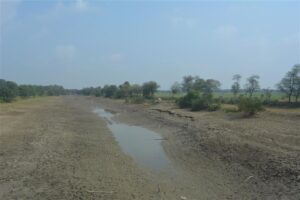
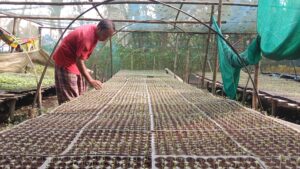
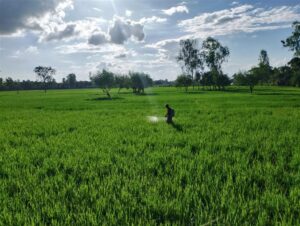
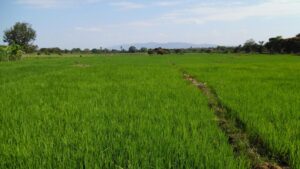
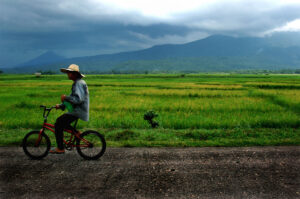
I am so inspired by this type of initiation of the daring farmer, who takes a risk and has the ability to fly against the winds, we salute them from our hearts.